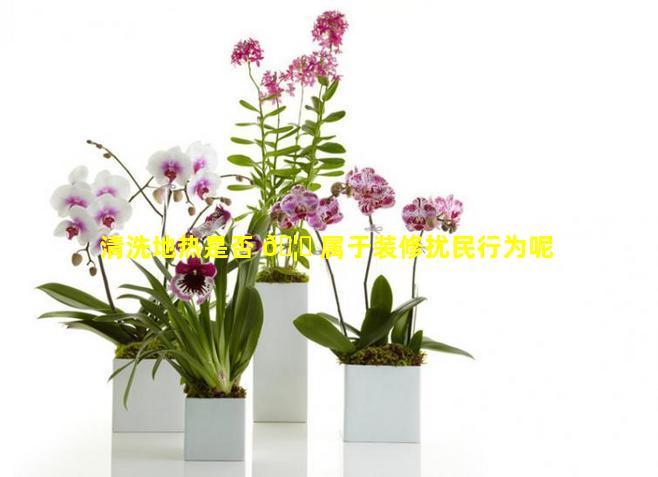地热的存在对房屋装修会有哪些影响呢
- 作者: 杨芊昱
- 来源: 投稿
- 2024-11-20
1、地热的存在对房屋装修会有哪些影响呢
地热的存在对房屋装修的影响:
1. 地面高度增加:
地暖系统在地面下方铺设,会导致地面高度增加约 510 厘米,需在装修时考虑高度调节,以免影响门窗安装和家具摆放。
2. 地面保温性提高:
地热系统会在地面下方形成一个保温层,提高地面的保温性,减少热量损失。这可能会影响地面的散热,需要调整供暖系统或空调系统以保持室内温度舒适。
3. 地面承重能力影响:
地热管道和地板保温材料会增加地面的重量,需考虑地板材料的承重能力。一些木质地板可能无法承受过重的负荷,需要选择更加耐压的地板材料。
4. 地面找平要求:
地热管道需要埋入平整的地面中,以确保管道均匀受热。在铺设地热管道之前,应进行地面找平处理,确保地面的坡度和平整度符合规定。
5. 地板材料选择受限:
某些地板材料不适合在地热系统上使用,因为它们可能会被热量损坏或变色。适合的地板材料包括瓷砖、石材、强化复合地板和工程木地板。
6. 墙面装饰受限:
在靠近地热管道的墙面上安装重物或大型装饰时,需小心避免损坏管道。应使用轻质的装饰材料,并保持与地面的适当距离。
7. 家具摆放受影响:
地热管道会影响家具的摆放,特别是大型家具和重物。应避免在管道上方放置重物,以免压坏管道。
8. 室内空气质量影响:
某些地热系统使用地表水作为热源,可能存在空气中的湿度增加或异味问题。需要安装除湿器或其他空气净化设备来改善室内空气质量。
9. 维护和维修不便:
如果地热管道出现问题,可能需要拆除地面或墙面才能进行维修,这会影响装修和生活便利性。
2、地热的存在对房屋装修会有哪些影响呢视频
地热的存在对房屋装修的影响
地板铺设:地热地板需具备良好的导热性,如瓷砖、复合实木地板或强化地板。
避免使用实木地板、软木地板或地毯,因其导热性差,影响地热效果。
墙面装饰:地热环境下,墙面温度较高,可能会影响壁纸或涂料的粘附性。
选择透气性好的墙面材料,如墙纸或环保涂料,避免积聚湿气。
家具摆放:地热地板上应尽量减少家具和家电的摆放,以免阻挡热量散发,影响地热效果。
家具应选择底脚高一点的,避免长时间受热变形或损坏。
室内湿度:地热系统会散发一定量的热量,导致室内湿度降低。
为保持室内湿度适宜,可使用加湿器或绿植调节。
供暖系统:地热系统可作为主要的供暖方式,但仍需考虑极寒天气下的辅助供暖措施,如壁炉或电热器。
能源消耗:地热系统能耗较高,需要合理控制室内温度和采暖时段,避免能源浪费。
注意事项:地热地板上的重物或尖锐物体可能会损坏地暖管路。
定期维护地热系统,包括清洗地源热泵和疏通管道。
地热房的室内温度一般不宜超过28℃,以免造成健康问题。

3、地热的存在对房屋装修会有哪些影响呢英语
The presence of geothermal energy can have several implications for building design and construction:
Foundation Design: Geothermal systems can require deep drilling, which may impact the foundation design of the building. Engineers must consider the potential for ground movement and subsidence related to geothermal drilling and installation.
Piping and Distribution: Geothermal systems typically involve extensive piping systems for fluid distribution. These pipes need to be properly designed, installed, and insulated to ensure efficient operation and minimize heat loss or gain.
Heating and Cooling Systems: Geothermal energy systems can provide both heating and cooling. However, the specific design of the heating and cooling systems will vary depending on the type of geothermal system used and the local climate conditions.
Indoor Air Quality: Geothermal systems can potentially introduce moisture into the building, which may affect indoor air quality. Proper ventilation and moisture control measures are essential to maintain a healthy and comfortable indoor environment.
Energy Efficiency: Geothermal energy systems are generally very energy efficient. However, the overall efficiency of the system depends on factors such as system design, installation, and maintenance.
Cost Considerations: Geothermal energy systems can involve significant upfront costs for drilling, installation, and equipment. However, they can offer longterm savings on energy bills compared to traditional heating and cooling methods.
Environmental Impact: Geothermal energy is a renewable resource that has a minimal environmental impact. However, the drilling and installation processes can temporarily disturb the surrounding environment and may require proper mitigation measures.
Overall, the presence of geothermal energy can influence building design and construction in terms of foundation engineering, piping systems, heating and cooling systems, indoor air quality, energy efficiency, cost considerations, and environmental impact. Careful planning and collaboration between architects, engineers, and geothermal specialists are crucial to ensure a successful and sustainable integration of geothermal energy into building projects.
4、地热对人体器官有伤害吗
地热对人体器官的影响取决于以下因素:
温度:高温(超过 45 摄氏度)会导致组织损伤,包括皮肤灼伤和内部器官损伤。
持续时间:长时间暴露在地热中,即使温度较低,也可能导致脱水和电解质失衡。
身体状况:某些健康状况,例如心脏病和糖尿病,会增加地热相关并发症的风险。
一般来说,在安全温度和持续时间内接触地热对人体器官没有显着伤害。如果出现以下情况,可能会对器官造成伤害:
极端高温: 地热温度非常高,例如 70 摄氏度或更高,可能导致皮肤灼伤、内出血和器官衰竭。
长时间暴露: 长时间(超过 2 小时)暴露在地热中,即使温度较低,也可能导致脱水,这可能会对肾脏和其他器官造成压力。
健康状况: 患有某些健康状况的人对地热的耐受性较差。例如,心脏病患者可能会经历心脏应激,糖尿病患者可能会出现血糖变化。
预防措施:为了最大程度地减少地热对器官的潜在伤害,建议采取以下预防措施:
避免长时间暴露在高温地热中。
补充水分以防止脱水。
如果出现任何不适,例如头晕、恶心或呼吸急促,请立即离开地热源并寻求医疗救助。
患有健康状况的人在使用地热前应咨询医疗专业人士。




